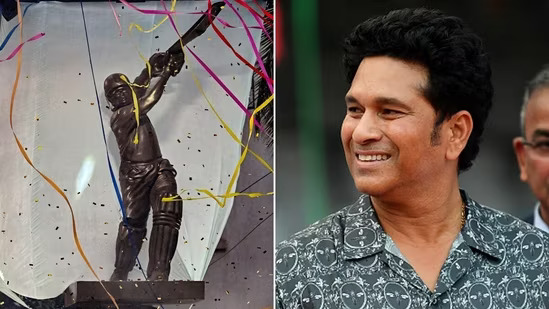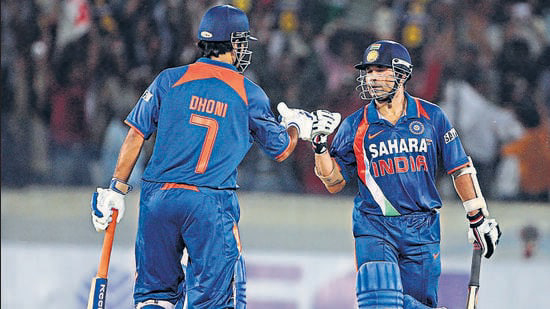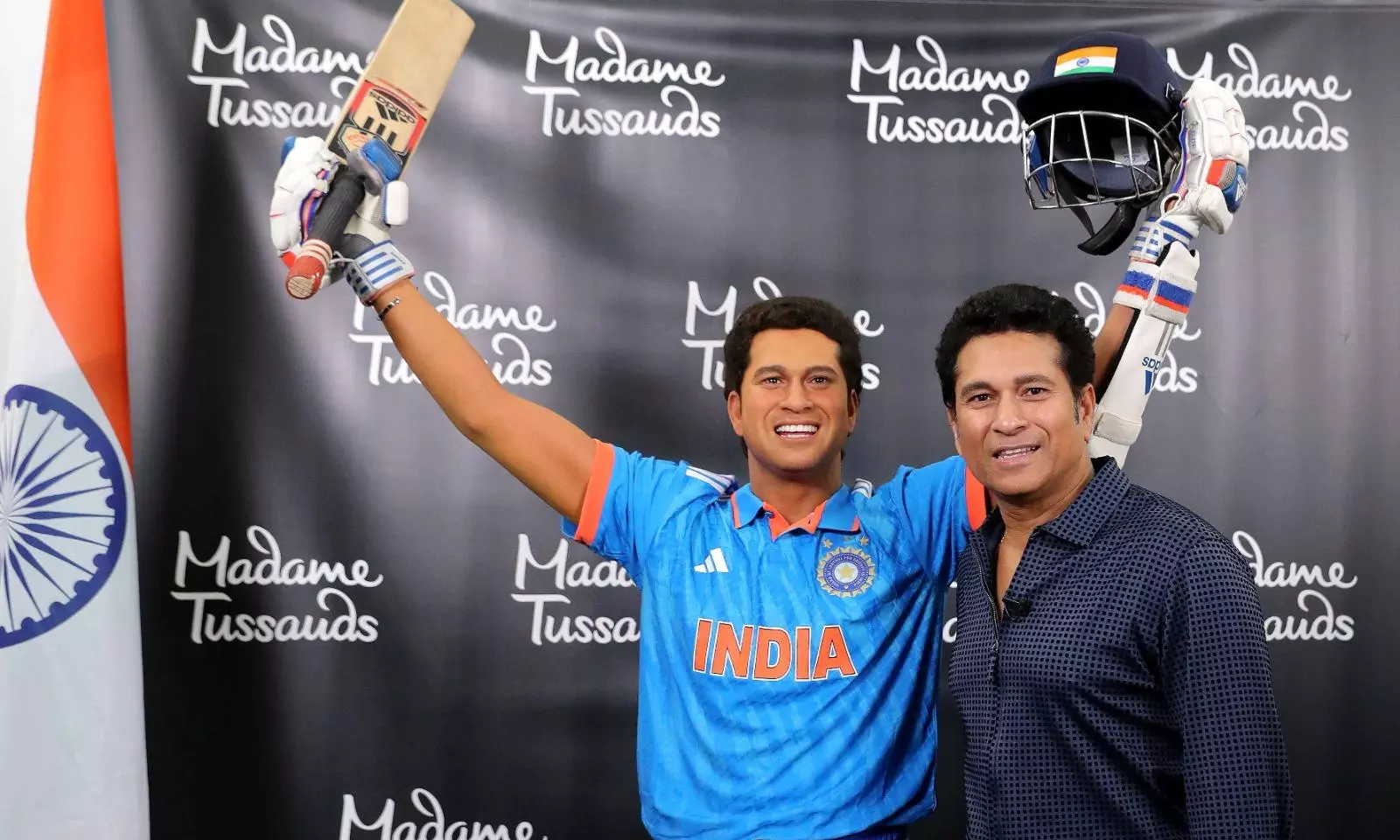Sachin Tendulkar stands tall again: Mumbai’s befitting tribute to its favourite son
Thursday 2 November 2023
Sachin Tendulkar’s statue was unveiled at the Wankhede, marking a deep tribute to his iconic cricket career and emotional connection to Mumbai and India.
Nearly a decade after he played his last international game, the little man was greeted with chants of ‘Saaaachiiin, Sachin’ by a largely empty Wankhede Stadium on Wednesday evening. The pre-recorded chants filtered through the public address system second after Sachin Tendulkar’s 22-foot statue, depicting a lofted straight drive, was unveiled adjacent to the stand named after him in a tribute by his home association that left him deeply moved.
Tendulkar’s 200th and final Test was against West Indies at the same venue in 2013, a game India wrapped up on the third day, November 16, by an innings and 126 runs. His final act on the field was a sparkling 74, his final act once the festivities were dispensed with and he made a stirring speech that left not a dry eye in the stadium was a walk to the middle of the ground to offer salutations to the pitch, a gesture of great symbolism and the ultimate proof of exactly what place the sport occupies in his life.
There was a slew of towering political and cricketing personalities in attendance at the unveiling of the statue and a function immediately afterwards, but there was no doubting who the cynosure was. Tendulkar’s connection to the sport and the country runs deep. He is revered and deified all over India, but it is Mumbai that is dearest to his heart, the Wankhede which holds the most special place in his consciousness.
Two of Tendulkar’s most iconic moments came at the ground he can rightfully call home – the realisation of a dream with victory in the World Cup final against Sri Lanka in 2011, and his last hurrah in international cricket, in front of his adoring immediate family – his mother included – and his extended family that the entire cricket-loving Indian fraternity had become. For the 24 years that he wielded his willow like a rapier and a broadsword and a scimitar, he dictated the moods of a billion people. His presence at the crease equalled reassurance, his dismissal drove daggers deep into Indian hearts. It’s unimaginable that one man could have carried so many hopes and expectations for so long – he first played for the country when he was 16 – and yet retained his sanity, his humility and his sense of equanimity.
Tendulkar’s evolution since his retirement has been little short of staggering. He has grown into an excellent speaker too, the first signs of which came during his passionate oration on the day of his Test retirement. On Wednesday, he regaled a rapt audience with previously unheard-of nuggets, including when he first visited the Wankhede as a 10-year-old to watch India play West Indies in 1983 as part of a 25-member group which had only 24 tickets because ‘tiny Tendulkar’ could easily be smuggled in.
One of his great regrets was not being able to bat alongside his hero Sunil Gavaskar, who took a 14-year-old Tendulkar to the Indian dressing room after the 1987 World Cup semifinal loss to England at the Wankhede. “The following year,” he recalled, “I was selected to play for Mumbai in the Ranji Trophy. When I entered the dressing room, every seat was taken except the one at the far left. I went and left my kit there and was informed that that had been SMG’s seat. I went out to bat and scored a hundred because that seat wasn’t used to being occupied. The crease was used to being occupied, instead, so I had no option but to score a hundred.” It was classic Tendulkar, understated and with a respectful sense of humour that hasn’t always been his calling card.
Tendulkar was more than a player and a batter and a cricketer for the entirety of his career when he strode the cricketing landscape like a colossus. He touched hearts, he wowed audiences all over the world and he had some of the greatest names to have graced cricket eating out of his hands. In India, he became an emotion from day one, his progress from a curly-haired, baby-faced 16-year-old to a senior statesman whose spirit remained undimmed even as successive injuries ravaged his body a wonderful example on how to ride the punches, how to marry the occasional bad times with the numerous good ones.
As he dedicated the statue to his numerous ‘non-strikers, including those who played before me and inspired me’, it was obvious that he was saying nothing for effect. This was Tendulkar, honest and unplugged. The Tendulkar India knows and loves. The Tendulkar with the power to unite and heal, more than anyone else.



